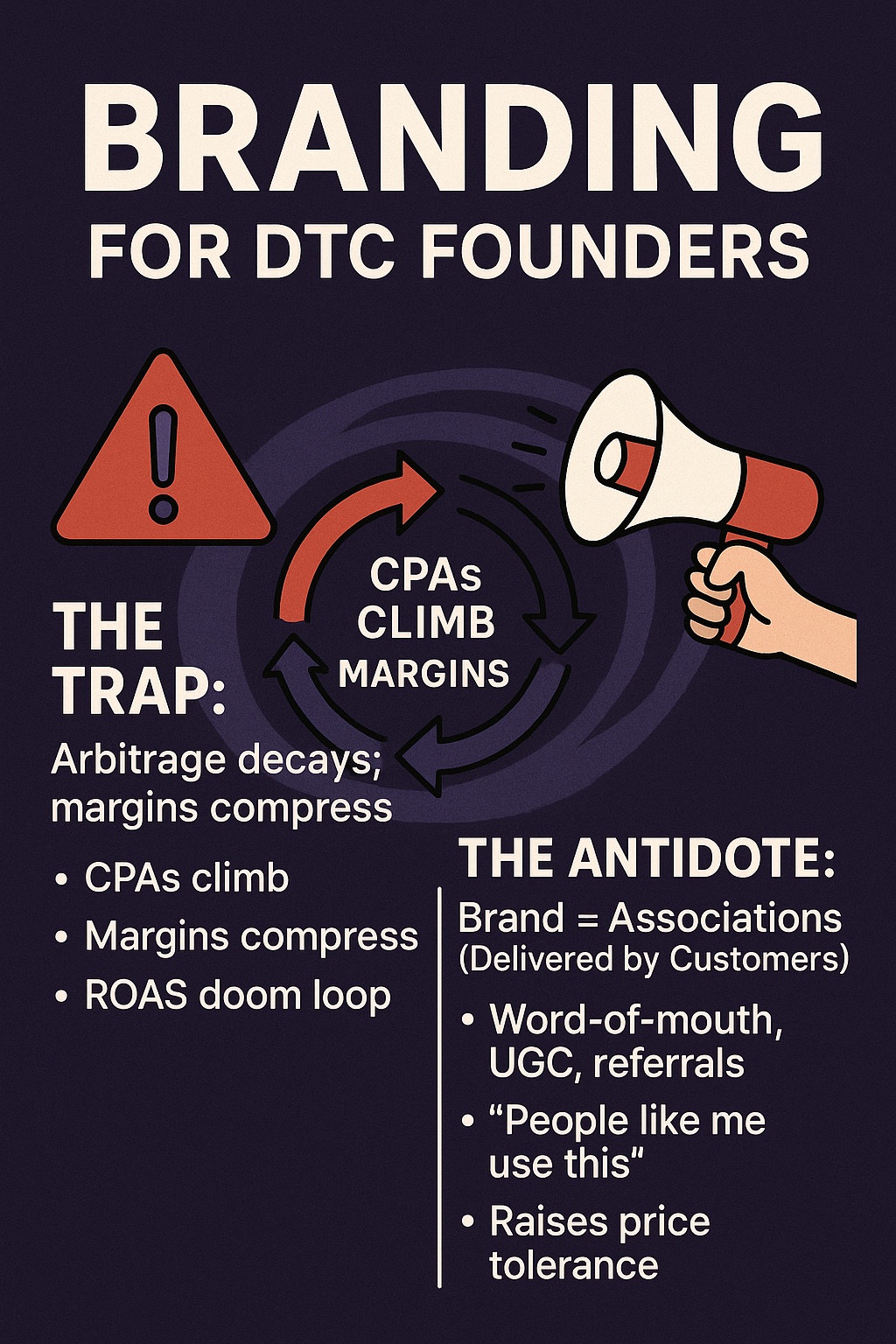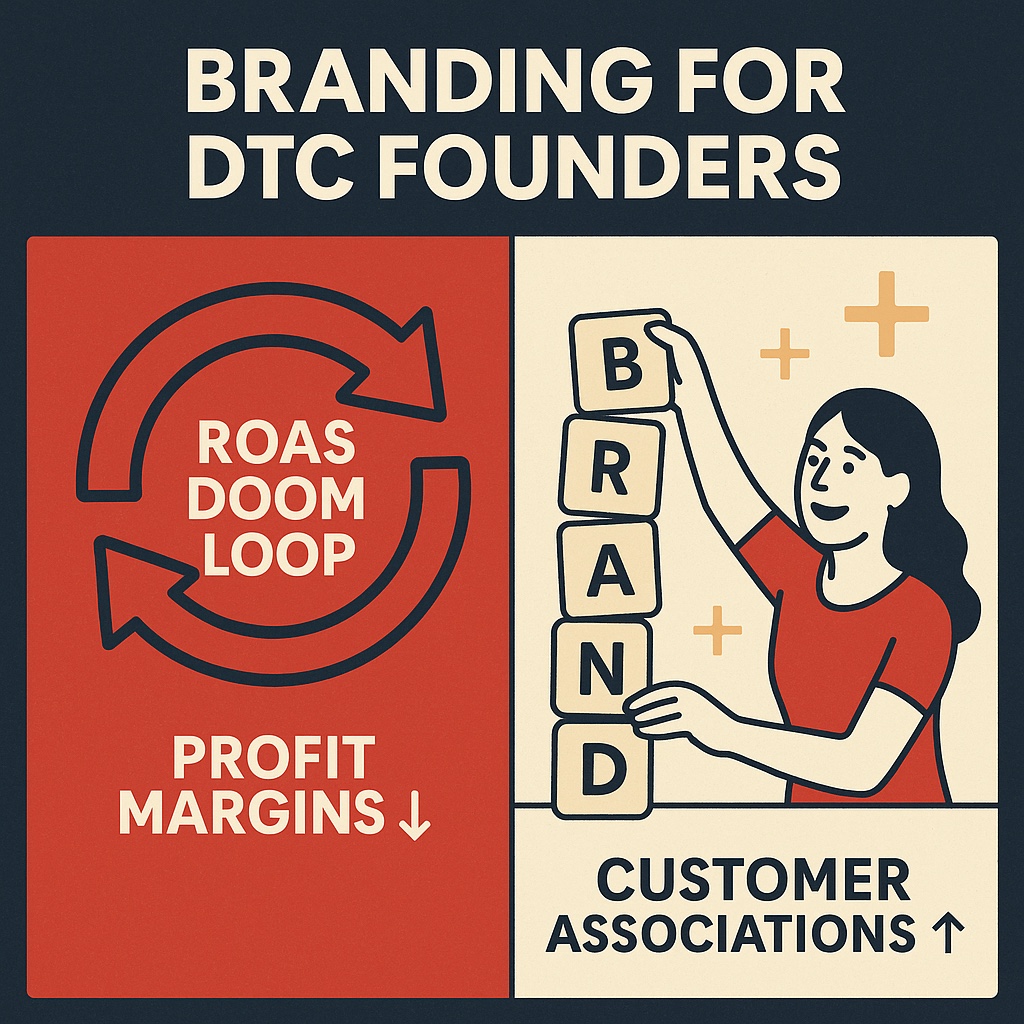From ROAS Doom Loop to Durable Growth: How Hormozi’s Brand Advice Turns Into a Brand-Advocate Engine

I was recently listening to an episode of The Game from Alex Hormozi and I came across this Q&A episode: https://youtu.be/KmHc_n38pSQ?si=cE8Ns5Rp5QEQdutk&t=2673. A DTC skincare founder doing around $10M topline with ~15% margins asked how to scale profitably. CPAs were rising as budgets went up. Sound familiar?
Quick note: Alex wasn’t talking about brand advocacy in this clip. What follows is my interpretation of his principles applied to how DTC brands can use brand-advocate communities (via Stoked) to make his advice practical.
Alex’s diagnosis was simple and a little stinging:
“You’re a performance marketer… you have to learn brand.”
He doubles down:
“As a physical product e-commerce owner… your core most important skill is the brand—you can’t outsource that.”
And his definition cuts the fluff:
“Branding is making associations with things your audience finds positive.”
The punchline: if you don’t shift your strategy, you get stuck in the ROAS doom loop—spending more to make less as you reach worse audiences. Conversion tricks and subscription add-ons help, but as Alex puts it, CRO is “steroids”—a one-time bump, not compounding growth.
So what does “learn brand” look like in practice for a DTC founder who still needs this month’s cash flow?
Here’s the move: build a brand-advocate community—and systematize it. In other words, turn Alex’s “associations” into a repeatable engine your customers run with you. This is where a platform like Stoked (our brand-advocate program software and services) fits: it helps you recruit the right advocates, equip them to create and share credible content, and measure the compounding effects over a 6–12 month horizon.
1) The trap: arbitrage decays; margins compress
Direct response (DR) works—until you scale. You start buying worse audiences, CPAs climb, margins compress, and you chase the next targeting hack. That’s the ROAS doom loop Alex warns about.
Advocacy breaks the loop by:
- Lowering blended CAC via word-of-mouth, UGC, and referrals.
- Increasing conversion because “people like me use this” beats “this ad says buy now.”
- Raising price tolerance as social proof accumulates and the brand feels premium.
2) The antidote: brand = associations (delivered by customers)
Alex says the job is to engineer the associations your ideal buyers already find positive. An advocate community does exactly that—at scale and with credibility—because customers carry the identity, values, and aesthetics your brand wants to be known for. When their voices are organized and amplified, the brand inherits those associations.
And because Alex urges a 6–12 month attribution lens for brand, advocacy is a natural fit: its effects are durable and compounding (branded search, repeat rate, share of search, talent magnetism).
“Start thinking like a capital allocator rather than just a direct-response marketer.”
3) The 12-month mix shift (Hormozi-aligned)
Alex’s north star at scale: move toward ~70% brand-driven efforts with ~30% DR “closer.” Advocacy is a core pillar of that brand side.
Budget glide path you can believe in
- Months 1–3: 20→35% brand (seed your advocate engine)
- Months 4–6: 35→50% brand (expand creators, program cadence)
- Months 7–12: 50→70% brand (big moments, partnerships, community flywheel)
DR stays on and efficient; brand starts carrying more of the load.
4) A 90-day rollout: from zero to a working advocate engine
Month 1 — Clarify & Codify (Founder-led)
- Association Map: List 10–15 emotions, aesthetics, and values your best customers already love. These are the cues you’ll consistently sit beside.
- Founder POV in 60 seconds: Problem → what you believe → your new way → proof.
- Distinctive Brand Assets: Lock your look, a memory hook (line/slogan), and a ritual.
- Advocate Criteria: Define who should and shouldn’t represent you.
Month 2 — Attract & Equip (Launch your Stoked-powered program)
- Recruit a Pilot Cohort (25–100 advocates).
- Onboarding & Briefs: Brand handbook, content prompts, disclosure guide.
- Content Cadence: 2–4 touchpoints/month.
- Lightweight Incentives: Early access, product credit, recognition.
Month 3 — Amplify & Measure
- Amplify: Reshare UGC, whitelist creator posts, embed social proof.
- Measure: Branded search, share of search, direct traffic, repeat rate, creator-assisted revenue.
- Optimize: Keep top contributors, coach the middle, rotate out misfits.
5) The Advocate Engine (simple operating system)
A.C.E. Loop — Attract → Cultivate → Equip
- Attract: Source from customers first; add aligned creators.
- Cultivate: Recognize, theme, and spotlight.
- Equip: Provide briefs, assets, and simple paths to contribute.
Signals you’re compounding (6–12 months):
- Branded search ↑
- direct traffic ↑
- repeat rate ↑
- willingness to pay ↑
- talent pipeline quality ↑
6) Measurement: see what brand actually moves
- Near-term: UGC quality, saves/shares, ad CTR on UGC.
- Medium-term: Branded search, share of search, direct traffic, repeat rate.
- Long-term: Price realization, gross margin, valuation narrative (“owned community”).
7) Pitfalls to avoid
- Making it purely transactional (that’s influencer marketing, not advocacy).
- Weak brand guardrails (inaccurate claims).
- Founder going missing (Alex: “you own brand”).
- Only tracking last-click ROAS.
- Scaling too fast without quality control.
8) The close: brand is the asset—customers are the engine
Alex’s challenge stands:
“You won’t get past where you’re at otherwise.”
If brand is “associations customers find positive,” then a brand-advocate community is the fastest, most credible way to manufacture those associations at scale—and to keep them compounding on a 6, 12, 18, 24-month horizon.
If you’re ready to operationalize this, run the 90-day rollout above. If you want a purpose-built system to recruit, brief, track, and scale advocates without drowning in spreadsheets, that’s exactly what Stoked was built to do.


